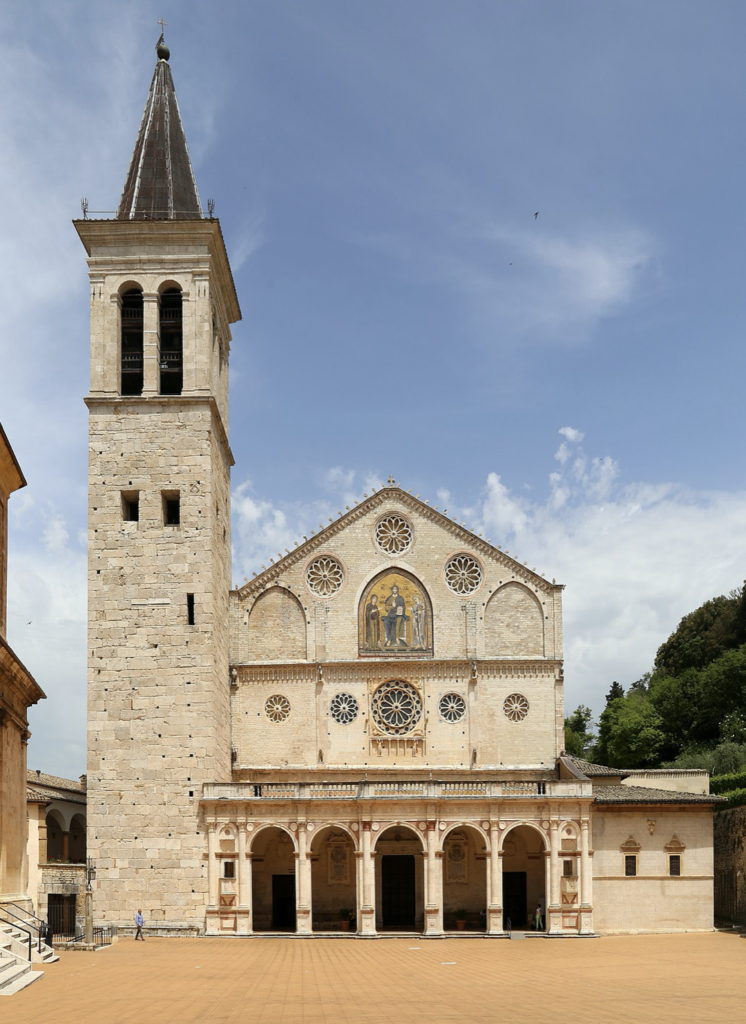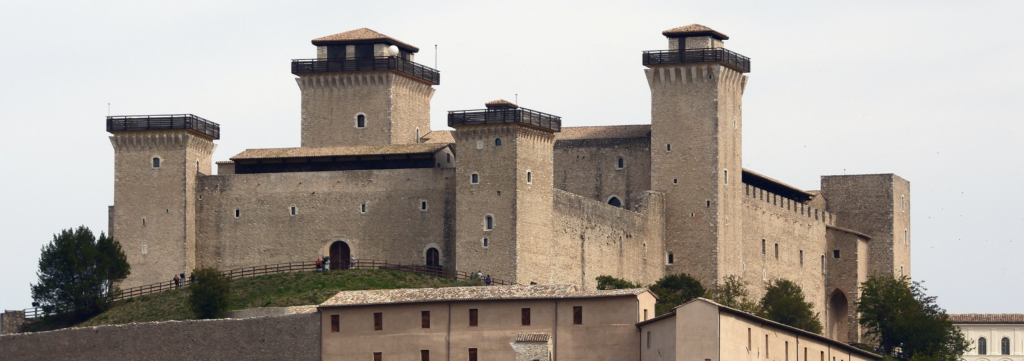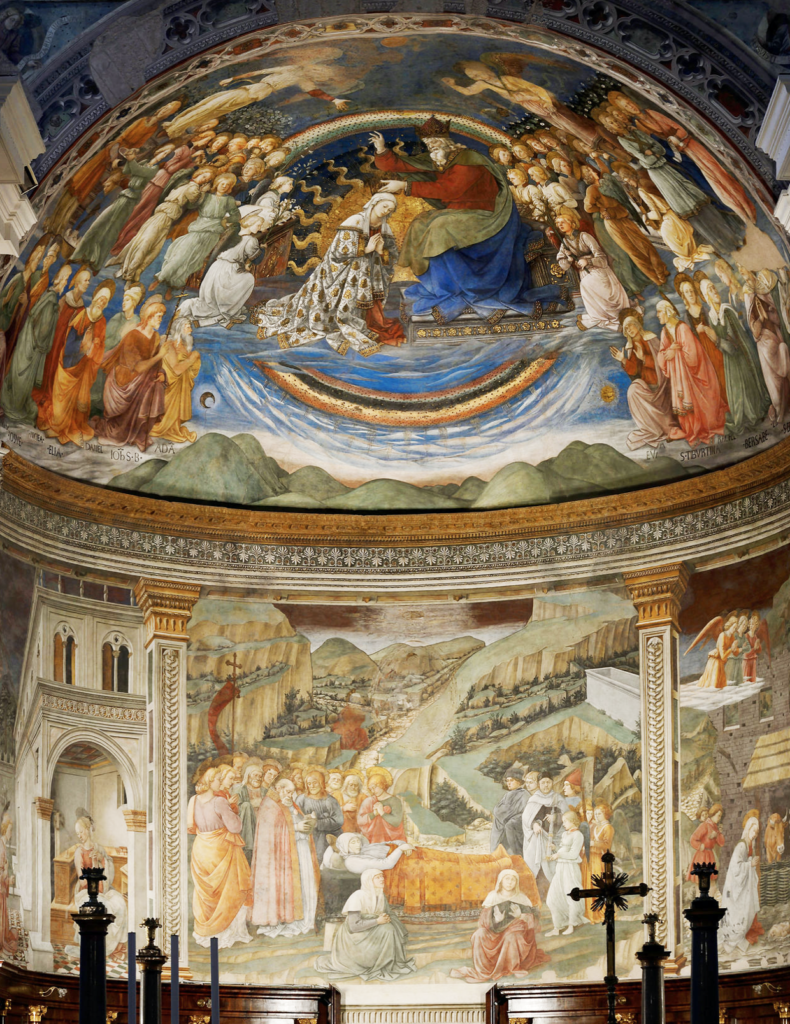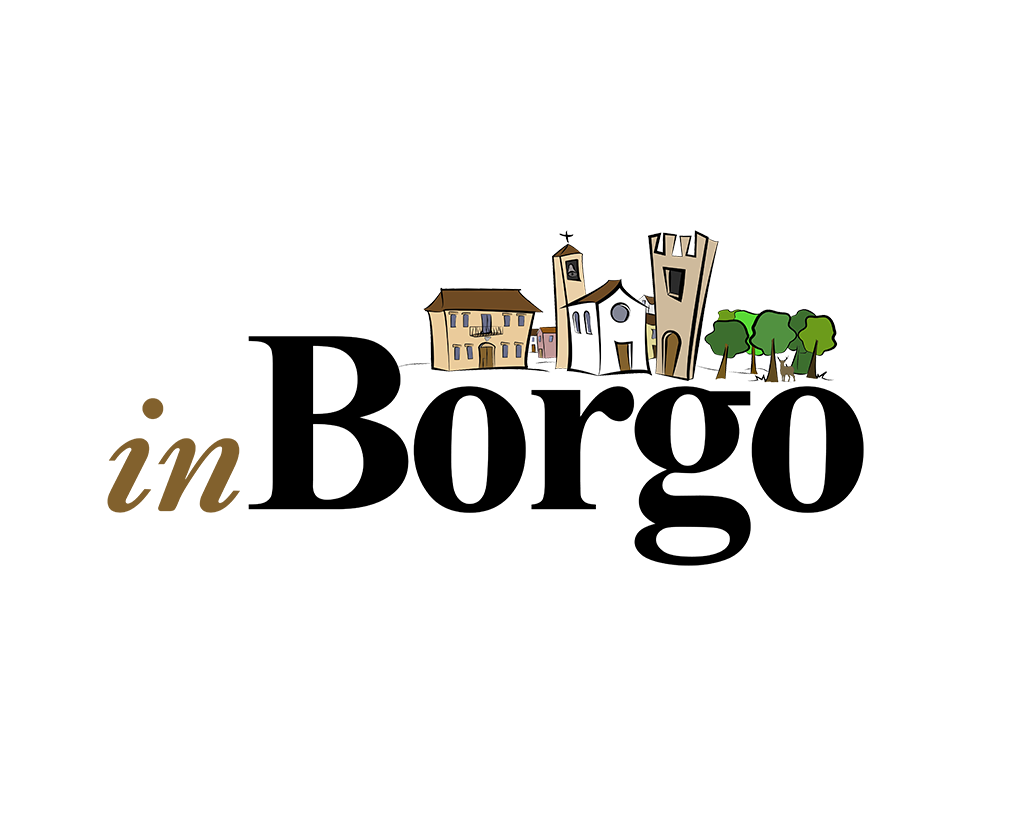
La storia di Spoleto risale all’epoca romana, quando la città era conosciuta come Spoletium. Durante il Medioevo, Spoleto divenne un importante centro culturale e politico sotto la dominazione longobarda e poi papale. Il Duomo di Spoleto, costruito nel XII secolo, è un esempio dell’architettura romanica dell’epoca. Il nome ufficiale è cattedrale di Santa Maria Assunta, venne costruita tra il 1151 e il 1227 in luogo di un edificio preesistente. al suo interno, nell’abside, vi è il pregevole ciclo di affreschi di Filippo Lippi Storie della Vergine, dipinto negli ultimi anni di vita dell’artista. Fu consacrata da Papa Innocenzo III nel 1198.
Nel corso dei secoli successivi, Spoleto è stata sede di numerose corti nobiliari e ha ospitato molti artisti e intellettuali. Durante il Rinascimento, la città era famosa per la produzione di tessuti di alta qualità e per le sue botteghe di artisti.
Uno dei principali punti di interesse artistico di Spoleto è la Rocca Albornoziana, un castello medievale costruito nel XIV secolo. La fortezza è stata restaurata nel XX secolo ed è aperta al pubblico per visite guidate.
Il Teatro Romano, costruito nel I secolo d.C., è un altro importante sito storico e artistico di Spoleto. Il teatro, che poteva ospitare fino a 6.000 spettatori, è stato restaurato e utilizzato per spettacoli dal vivo durante il Festival dei Due Mondi, un festival annuale di musica, teatro e danza.
Oltre a questi siti storici e artistici, Spoleto offre anche numerose opportunità per gli appassionati di arte contemporanea. La Galleria Civica d’Arte Moderna e Contemporanea, ad esempio, ospita mostre di artisti contemporanei italiani ed internazionali.
The history of Spoleto dates back to Roman times, when the city was known as Spoletium. During the Middle Ages, Spoleto became an important cultural and political centre under Longobard and then papal rule. The Cathedral of Spoleto, built in the 12th century, is an example of the Romanesque architecture of the time. Its official name is the Cathedral of Santa Maria Assunta, and it was built between 1151 and 1227 on the site of a pre-existing building. inside, in the apse, there is a valuable cycle of frescoes by Filippo Lippi Storie della Vergine, painted in the last years of the artist’s life. It was consecrated by Pope Innocent III in 1198.
Over the following centuries, Spoleto was the seat of numerous noble courts and hosted many artists and intellectuals. During the Renaissance, the city was famous for its production of high-quality textiles and its artists’ workshops.
One of the main artistic sights in Spoleto is the Rocca Albornoziana, a medieval castle built in the 14th century. The fortress was restored in the 20th century and is open to the public for guided tours.
The Roman Theatre, built in the 1st century A.D., is another important historical and artistic site in Spoleto. The theatre, which could seat up to 6,000 spectators, was restored and used for live performances during the Festival dei Due Mondi, an annual festival of music, theatre and dance.
In addition to these historical and artistic sites, Spoleto also offers numerous opportunities for contemporary art enthusiasts. The Galleria Civica d’Arte Moderna e Contemporanea, for example, hosts exhibitions by contemporary Italian and international artists.


